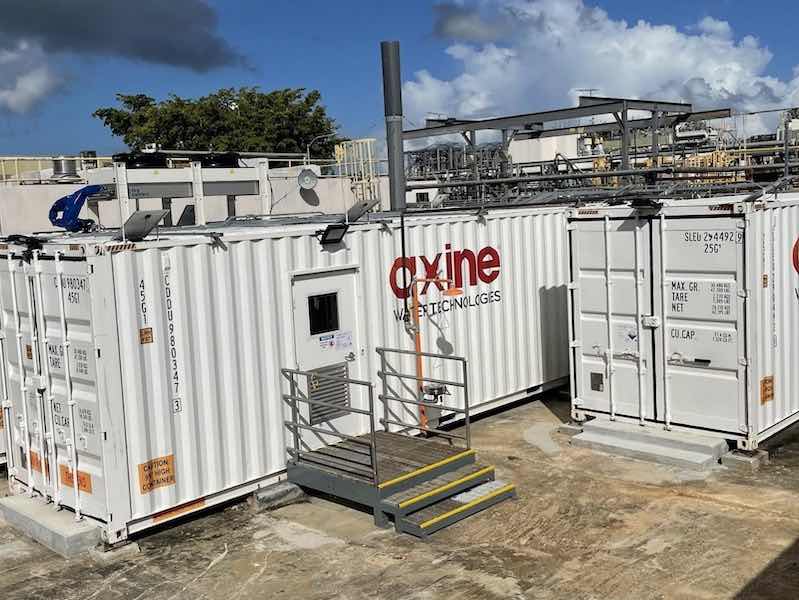Axine Water Technologies announced that it has successfully completed a comprehensive test program to verify the performance of its proprietary electrochemical oxidation technology for on-site destruction of PFAS compounds in water and wastewater.
Axine will leverage its proprietary electrochemical oxidation (EOx) technology commercially deployed for pharmaceuticals to provide a cost-effective solution to certify the destruction of PFAS compounds to meet evolving regulatory standards. Axine’s EOx system enables direct PFAS destruction in wastewater as opposed to removal offered by alternative extraction techniques that simply collect PFAS for hazardous disposal or secondary destruction.
Per- and polyfluoroalkyl substances (PFAS), commonly referred to as “forever chemicals” have been manufactured and used in a wide range of industries worldwide since the 1940s. PFAS chemicals are very persistent in the environment and in the human body. PFAS exposure may lead to adverse health outcomes in humans including reproductive and developmental, liver and kidney, and immunological effects. The USA Environmental Protection Agency recently proposed the regulation of some PFAS chemicals as hazardous substances.
Axine’s EOx technology test program was conducted on model wastewater contaminated with five common PFAS compounds. Axine successfully treated high PFAS concentration from 10 parts per million (ppm) to destroy all of the PFAS to under 100 parts per trillion (ppt), achieving a 5-log reduction (99.999%). Axine’s EOx technology also demonstrated the ability to treat low initial PFAS concentrations from an initial concentration of 10 parts per billion (ppb) to below detection levels at 10 ppt, a 3-log reduction. Results confirmed destruction of PFAS oxidation by-products including total organic fluorine and total oxidizable precursors. Axine’s EOx technology uses advanced catalysts and electricity to oxidize organic pollutants in wastewater to non-hazardous by-product gases. No toxic chemicals were required, and no solid waste was generated.
“We’re very pleased with these results,” said Victor Leung PhD, Vice President, Technology. “They are consistent with the performance we’re achieving in the pharma industry where we routinely treat wastewater contaminated with non-biodegradable pharmaceuticals, including those that are fluorinated, to below analytical detection limits. Our EOx technology is a powerful oxidation process capable of breaking down and oxidizing the most stable organic compounds. Based on these results, we’re confident that we will be able to deliver a safe, reliable new standard for on-site PFAS destruction to give customers the surety that their PFAS problem is solved.”
Greg Peet, Axine CEO added, “PFAS is one of the most serious health and environmental challenges facing the water sector. For industrial, municipal, or federal facilities required to treat PFAS contaminated water and wastewater we believe PFAS destruction should be the required standard for safe, sustainable management of PFAS contaminated water”.
On August 26, 2022, the US federal government Environmental Protection Agency (EPA) announced that it will designate the two most common PFAS compounds (PFOA and PFOS) as hazardous substances under the Superfund law. The EPA said it will publish the proposed rule in the coming weeks, and then public will have 60 days to comment before the plan can be finalized. When approved, the EPA regulation will require companies to assess and report to government, and clean-up environmental hazards. The Environmental Working Group, an environmental organization, last year identified 41,828 industrial and municipal sites in the United States that it said are known or suspected of still using PFAS.































